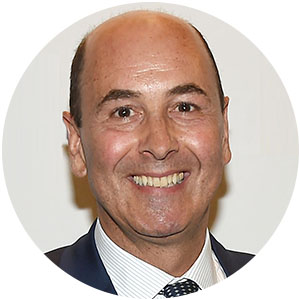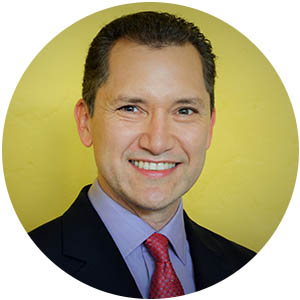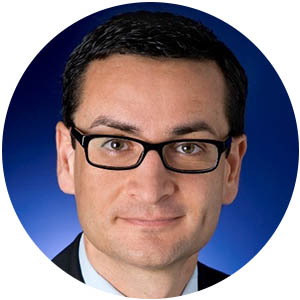With interest rates in the gutter, large corporations are looking to put their excess funds to good use.

It’s pretty easy to just sit on one’s mountain of cash, as worldwide nonfinancial corporations have done for the past few years. Putting that cash to work for the organization, however, is a bit trickier. For most corporate treasurers the oceans of money they hold—$1.9 trillion in corporate America and $2.3 trillion in corporate eurozone, according to a US Treasury strategy consultant—can be a challenge, especially now that negative interest rates transform inactive assets into hot potatoes.
“Negative interest rates, like those applied on euro and Swiss franc balances, are prompting companies to become even more efficient in managing their cash,” says Sascha Petrusev, head of liquidity and investment product management for the Americas at Deutsche Bank in New York. “Companies have to rethink the utilization of idle balances in currencies that may incur a negative yield, as there is greater incentive to deploy this excess cash to self-fund cash needs within the group.”
There is no right or wrong way to sit on your cash: Different economic conditions or changes in legislation can call for different solutions. More important, different businesses demand different approaches. To see what this means in practical terms, we looked at how treasury is managed by three different entities: a cash-pooling manufacturer, a well-off foodmaker and a tech-savvy Silicon Valley firm. The conclusion? Corporate treasurers cannot give up exploring new models.
THE CLASSIC POOLING SOLUTION

Prysmian, the world’s largest cable producer, operates in nearly 50 countries and manufactures in some 30. Since 2006, Prysmian has managed intragroup cash with a pooling structure. Every night, Prysmian Treasury, which acts as an in-house bank, collects the cash held and repays the overdraft due for each one of its units via its Citigroup account. The system provides cash updates weekly. Each unit hedges its currency position with Prysmian Treasury, which acts as a clearing house and hedges the net positions on the market. Prysmian Treasury, which had a 2015 turnover of around €1.5 billion ($1.7 billion), also hedges its own currency positions to cover transaction risks.
“The benefits of a structure like [this] are coming, on one hand, from the optimization of the funds we have available, and on the other hand, from size, because with larger volumes we get better conditions,” says Giovanni Zancan, group finance director at Prysmian. “We manage to reduce the difference between the cost of debt and the yields of the cash. In our case the best use of the intragroup cash is to minimize the group’s overdrafts.”
However, cash pooling is not always possible. In several countries where Prysmian operates, it is forbidden to export capital abroad or the cost of doing so is prohibitive. In such countries—which include Brazil, Argentina, Turkey and China but also smaller entities such as the Ivory Cost or Tunisia—cash-pooling Prysmian has a separate structure in place to manage the funding and the assets in cash independently. Currency exchange hedging is also done on a case-by-case basis, but Prysmian acts as a clearinghouse-plus, covering its own positions.
Out of a total of 50 countries in which Prysmian operates, some 39 are part of the cash pool; another 11 are outside it. The 11 represent less than 20% of the group’s sales, but hold half of the group’s cash—around €330 million at the end of March.
WHEN POOLING DOESN’T WORK

Agilent, with total cash of around $2.2 billion, has an in-house bank—Agilent Technologies Singapore—and does cash pooling in different regions, including the US, London and elsewhere. “It is not always possible to move funds from one location to another, and this is why we keep distinct locations for pooling funds,” says Guillermo Gualino, Agilent treasurer, adding that most of the group’s liquidity is held in Singapore, “which is the most efficient solution for us.”
But it wasn’t always like this. Agilent’s current status is the result of deep changes implemented in the past two years, after the 2013 spin-off of Agilent and Keysight Technologies. The spin-off practically cut the group in half, with Keysight holding the measurement activity and Agilent providing laboratories worldwide with instruments, services, consumables applications and expertise in life science, diagnostics and applied chemical markets. It became a simpler business.
“After the spin-off, our infrastructure was by far too complex for our new reality,” Gualino explains. This prompted a review of all operations, which included discussions between Treasury and its internal customers, such as accounts payable (AP) and accounts receivable (AR). “This is important because treasury has different needs and points of view from theirs, and we wanted them to be onboard with the changes,” Gualino says.
Technology helped. For example, the company ended up combining some AP and AR accounts and using ISO XML, a technology that helps streamline the communication associated with each payment. Introducing ISO XML allowed AP and AR to implement changes and have fewer banking accounts without additional manual work.
Understanding the different needs of each part of the group has not been an easy feat. “What took longer was to negotiate these changes internally,” Gualino says. “It cannot happen overnight. But we learned that changes are possible.”
The overhaul concluded with reduction of between 40% and 60% in the costs and time spent in operation.
“What is most important is that we learned how to keep things nimble and simple,” says Gualino, adding that a new ongoing feature is weekly “cash modernization” meetings. “Over these meetings we discuss what we do and how we do it, with the goal to eliminate useless processes and become nimbler and simpler.”
SEEKING SAFER INVESTMENTS

Meanwhile, some companies need neither cash pooling nor an in-house bank. Campbell Soup, for example, used to do cash pooling in Europe through Bank of America and had an in-house bank based in Belgium. The soupmaker closed both operations a few years ago, according to Ashok Madhavan, Campbell’s treasurer.
“The issue for us, as is the case in most food companies, is dealing with an excess of cash in each unit,” he says. “Cash pooling makes most sense when you can use excess cash of one company for another company in need of funding. We do not have that situation.”
Since the sale of European operations in 2013, the company has had just one unit operating in Europe. “[It] would not make any sense to have cash pooling there now,” says Madhavan. He stresses that cash pooling structures work well in common currency areas but less so in regions, such as Asia and Latin America, that may have significant currency regulations.
Campbell had total cash in excess of $200 million in April 2016, most of which is still being held outside the US, mainly in Australia and in Canada. Madhavan seeks good quality investments that emphasize principal protection rather than achieving the highest yields.
Having plenty of cash is a wonderful thing. It can provide funds for opportunistic investments or immediate needs. However, with interest rates going so low they’re underwater, it’s not prudent to sit on cash and wait for an opportunity (or need) to fall from the sky.
According to Deutsche’s Petrusev, there is no time to spare. As the regulatory landscape continues to evolve, “treasurers need to remain actively engaged with their internal and external infrastructure functions, industry peers and bank providers to understand the impacts and ensure continued compliance with potential changes in regulations, such as the OECD Base Erosion and Profit Shifting (BEPS) action plan and US Treasury Department regulations under IRS code section 385,” Petrusev says, in reference to recent proposals that might affect certain cash-pooling structures.
Or as Gualino puts it: “The process to find better ways to manage cash never ends.”



